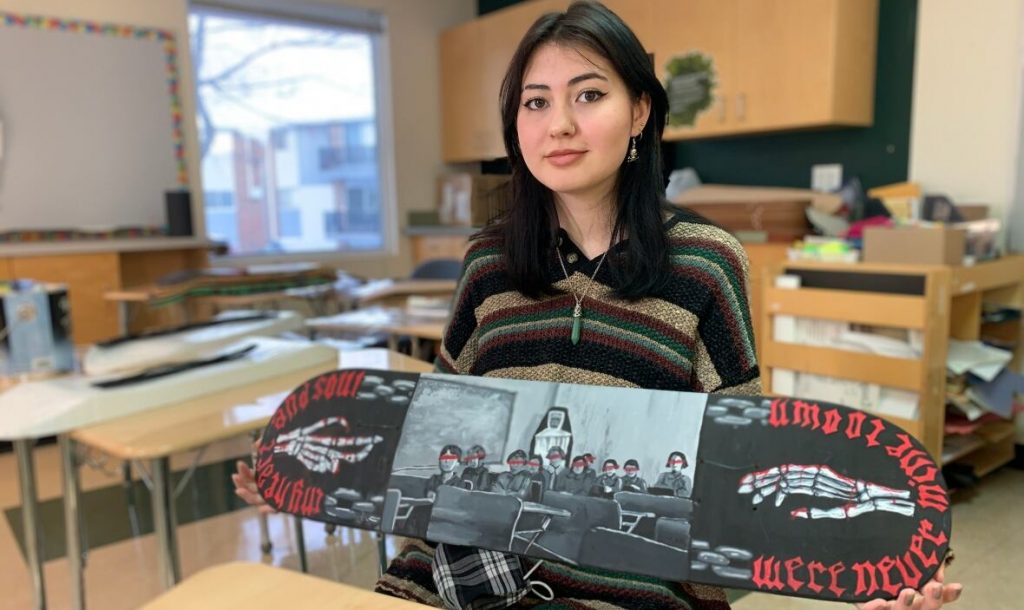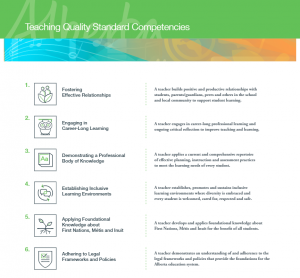An Albertan teacher made waves with his “sk8trepreneur” course in 2020. One of the class projects was on “Exploring Colonialism, Creativity and Reconciliation with Skateboards, [which] combines skateboard design with Indigenous history” (CBC).
Kristian Basarada had his students create their own brands from the ground up, from defining their brand’s purpose to designing a logo. He teamed up with Cree artist Jon Cardinal and Cree professional skateboarder Joe Buffalo. Buffalo is also a residential school survivor and shared his experiences with the students. The project culminated in the students’ work being showcase at a local skateshop for over a month.

Grade 12 student Georgia Lantz displays her skateboard design. (CBC/Dave Bajer)
As a Digital Arts / Graphic Production teacher, I find Basarada’s project incredibly inspiring. He authentically ties together teen culture, history, maker-skills, and the community. Skateboards have a history of pushing the underrepresented out from under the rug of Mainstream Culture. Candian Dimension has an excellent interview with Micheal Langan, owner of Colonialism Skateboards. “Riding is resistance. Every kickflip, nose grind, or ollie in an occupied territory like Canada is an act of thrashing colonialism” (Sean Carleton, 2018).
References:
CBC/Radio Canada. (2020, November 29). Sherwood Park teacher wins GG award for course linking skateboard design, Indigenous history | CBC News. CBCnews. https://www.cbc.ca/news/canada/edmonton/sherwood-park-teacher-wins-gg-award-for-course-linking-skateboard-design-indigenous-history-1.5816784.
Sean Carleton. (2018, June 13). Thrashing colonialism: Skateboarding, history, and the power of education. Canadian Dimension. https://canadiandimension.com/articles/view/thrashing-colonialism-skateboarding-history-and-the-power-of-education.





